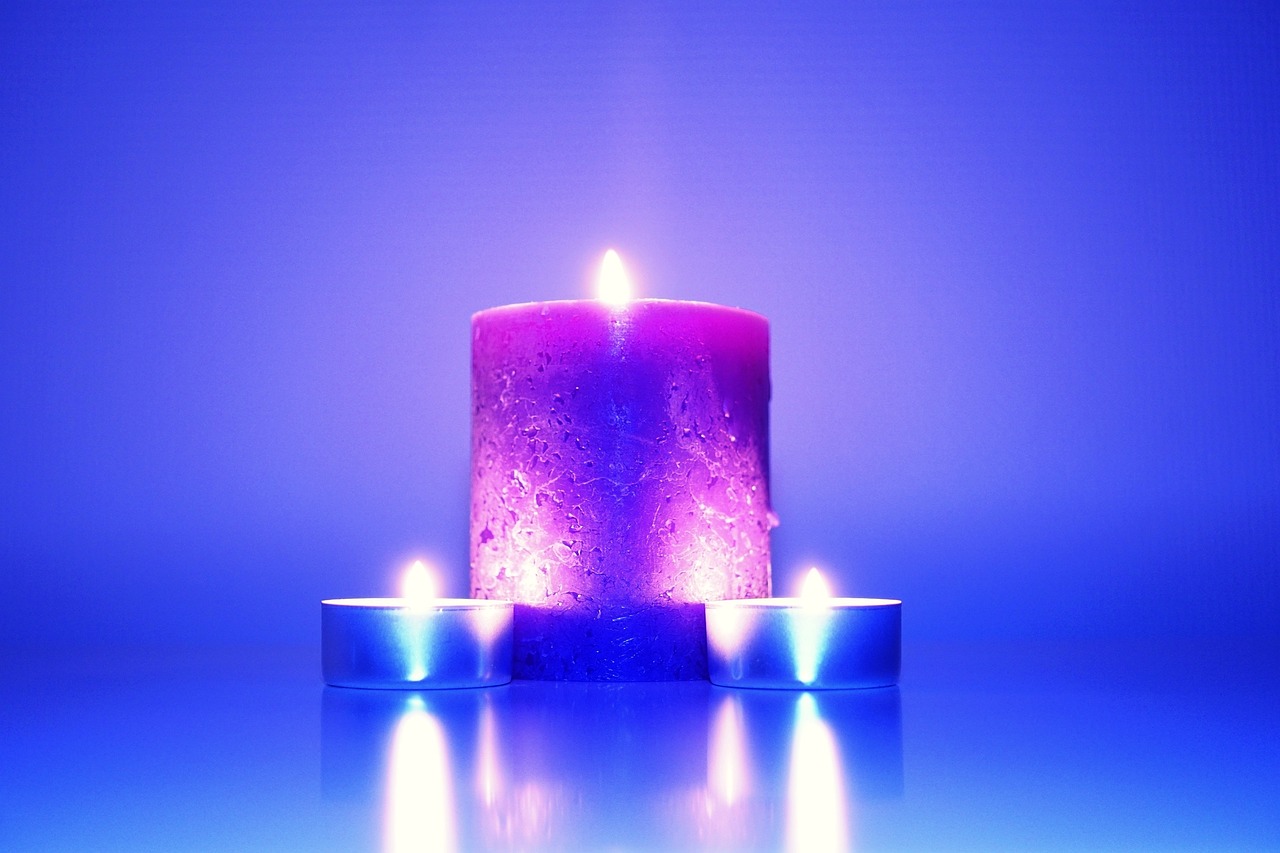How to Make Your Own Scented Candles
Creating your own scented candles is a rewarding and enjoyable craft that allows you to personalize your living space with unique fragrances. By following a few simple steps, you can craft beautiful candles that not only smell amazing but also add a cozy ambiance to any room.
When embarking on the journey of making scented candles, the first crucial step is selecting the right fragrance. The scent you choose will set the mood and atmosphere of the space where the candle will be used. Consider your personal preferences, whether you prefer floral, fruity, or woody scents, and think about how you want the candle to make you feel.
Next, you'll need to choose the ideal wax for your candles. Different waxes, such as soy, paraffin, and beeswax, offer unique characteristics that affect scent retention and burning time. Understanding the properties of each type of wax will help you create candles that burn cleanly and release fragrance effectively.
Before diving into the candle-making process, gather all the essential tools and equipment you'll need. From molds and wicks to fragrance oils and a double boiler, having the right supplies on hand is key to a successful candle-making project. Don't forget about safety equipment to ensure a safe crafting experience.
Adding personal touches to your candles can elevate them from ordinary to extraordinary. Consider incorporating dried flowers, glitter, or colorants to customize the look of your candles and match them to your decor style. These decorative elements can enhance the overall aesthetic and make your candles truly one-of-a-kind.
Mastering the pouring technique is essential for creating professional-looking candles. Ensuring that the melted wax is poured evenly into containers will result in a smooth finish and consistent fragrance distribution throughout the candle. Take your time and pour with precision to achieve the desired results.
Setting the perfect wick in your candle is crucial for optimal burning and fragrance diffusion. Placing and securing the wick correctly in the candle container will ensure that the candle burns evenly and releases the scent effectively, providing a pleasant experience every time you light it.
Once your candles are made, it's important to follow proper curing and storage techniques to preserve their fragrance potency and extend their shelf life. By allowing the candles to cure properly and storing them in a cool, dry place away from direct sunlight, you can enjoy their delightful scents for longer.
Lastly, familiarize yourself with common issues that may arise during the candle-making process and learn how to troubleshoot them effectively. From sinkholes and frosting to tunneling, knowing how to address these challenges will help you create professional-quality candles with ease.

Choosing the Right Fragrance
When it comes to making your own scented candles, one of the most crucial decisions is choosing the right fragrance. The scent of a candle can evoke memories, create ambiance, and set the mood in any space. So, how do you go about selecting the perfect fragrance for your homemade candles?
First and foremost, consider your personal preferences. Do you prefer floral, fruity, woody, or fresh scents? Your own taste plays a significant role in choosing a fragrance that resonates with you. Additionally, think about the purpose of the candle. Are you creating a relaxing atmosphere for a spa night or a festive ambiance for a celebration?
Exploring blending options can also open up a world of possibilities. Mixing different fragrances can result in unique scent combinations that cater to your specific preferences. For example, blending lavender with vanilla can create a calming and soothing aroma perfect for unwinding after a long day.
Furthermore, consider the season and occasion when selecting a fragrance. Opt for warm and cozy scents like cinnamon and pumpkin spice for the fall and winter months, while lighter and floral scents like jasmine and citrus are ideal for spring and summer.
Lastly, don't be afraid to experiment and get creative with your fragrance choices. You can create signature scents that reflect your personality or match the decor of your home. Adding essential oils or fragrance oils in varying concentrations can help you achieve the perfect balance of aroma for your scented candles.

Selecting the Ideal Wax
When it comes to creating your own scented candles, selecting the ideal wax is a crucial step that can significantly impact the final product. Different types of candle wax offer unique characteristics that affect scent retention, burning time, and overall quality. Understanding the properties of each wax option, such as soy, paraffin, and beeswax, can help you make an informed decision based on your preferences and desired candle outcome.
Soy wax, known for its eco-friendly nature and clean burn, is a popular choice among candle makers looking for a natural alternative. It has excellent scent throw capabilities, meaning it can effectively disperse fragrances throughout a room when the candle is lit. Additionally, soy wax is easy to work with and can hold a significant amount of fragrance oil, resulting in a strong and long-lasting scent experience.
On the other hand, paraffin wax is a traditional option that is widely used in the candle-making industry. It is known for its ability to hold color well and create vibrant candles. Paraffin wax also has a high fragrance load capacity, making it a suitable choice for those seeking intense scent diffusion. However, some individuals may prefer soy or beeswax due to paraffin's petroleum-derived nature.
Beeswax is a natural and sustainable wax option that offers a subtle honey-like aroma when burned. It has a long burn time and emits a warm, soft glow when lit, adding to the cozy ambiance of the candle. Beeswax is often favored for its air-purifying properties and the natural look it imparts to candles, making it a popular choice for eco-conscious consumers.
When selecting the ideal wax for your scented candles, consider factors such as fragrance compatibility, burn time, sustainability, and personal preferences. Experimenting with different wax types and blends can help you discover the perfect combination that suits your candle-making style and desired outcomes.

Essential Tools and Equipment
When it comes to creating your own scented candles, having the right tools and equipment is essential for a successful project. To start off, you will need a variety of items to ensure that your candle-making process goes smoothly and safely. One of the essential tools you will need is a double boiler, which is used to melt the wax evenly without direct heat. This ensures that the wax melts consistently and prevents it from burning or overheating.
In addition to a double boiler, you will also need molds to shape your candles, wicks to provide the flame, and fragrance oils to add the desired scent. Choosing the right wick size is crucial for proper burning, as it affects how the candle will perform. Moreover, safety equipment such as gloves and goggles should not be overlooked, as working with hot wax can pose risks if proper precautions are not taken.
Furthermore, having a dedicated space for candle-making is important to prevent any accidents and keep your materials organized. This space should be well-ventilated and free from any flammable objects to ensure a safe working environment. Additionally, having a designated area for curing the candles after pouring is essential to maintain the quality of the final product.
To add a personal touch to your candles, consider using decorative elements such as dried flowers, glitter, or colorants. These additions can enhance the visual appeal of your candles and make them unique to your style and preferences. Experimenting with different combinations of decorations can lead to stunning results that reflect your creativity.

Adding Personal Touches
Adding personal touches to your scented candles is a wonderful way to elevate their appearance and create a unique sensory experience. One creative option is to incorporate decorative elements like dried flowers, which not only add a charming aesthetic but also infuse a subtle natural fragrance into your candles. Additionally, a sprinkle of glitter can bring a touch of sparkle and glamour to your creations, perfect for special occasions or gifts. If you prefer colored candles, using colorants allows you to customize the hue to match your décor or mood, adding a personal flair to your scented candles.

Mastering the Pouring Technique
Mastering the pouring technique is a crucial step in creating high-quality scented candles that not only look beautiful but also provide a long-lasting fragrance experience. When it comes to pouring the melted wax into containers, precision and technique play a significant role in the final result. One essential aspect to consider is the temperature of the wax; pouring it at the right temperature ensures proper adhesion to the container and optimal scent throw.
Additionally, the pouring speed can impact the overall appearance of the candle. Pouring too quickly may create air bubbles or uneven surfaces, while pouring too slowly can cause the wax to harden before filling the container completely. Finding the right balance in pouring speed is key to achieving a smooth and professional finish.
Another factor to master is the pouring height. Pouring from too high can create splashes and disrupt the fragrance distribution, while pouring from too low may lead to uneven layers within the candle. Experimenting with different pouring heights can help you find the perfect technique that works best for the type of candles you are creating.
Furthermore, considering the type of container you are using is essential for mastering the pouring technique. Different containers may require varying pouring methods to ensure an even fill and proper adhesion of the wax. Understanding the characteristics of the container and adjusting your pouring technique accordingly can significantly impact the final look and quality of your scented candles.
Lastly, practicing the pouring technique is key to mastering it. The more you work with melted wax and pour it into containers, the better you will become at achieving consistent results. Don't be afraid to experiment with different pouring techniques and styles to find what works best for you and your candle-making process.

Setting the Perfect Wick
Setting the perfect wick is a crucial step in ensuring the optimal performance of your scented candles. The wick serves as the pathway for the melted wax to travel up and fuel the flame, ultimately releasing the fragrance into the air. To set the perfect wick, you need to consider the size of the container and the type of wax being used. A wick that is too small may lead to tunneling, where the wax burns down the center, while a wick that is too large can cause smoking and uneven burning.
When setting the wick, ensure it is centered in the container to allow for an even burn. You can use a wick holder or simply hold the wick in place with a stick or pencil while pouring the wax. Additionally, trimming the wick to the recommended length before lighting the candle is essential to prevent excessive flickering and soot formation.
Choosing the right wick size is also crucial for the specific type of wax you are using. Different waxes require different wick sizes to burn efficiently and release the fragrance effectively. It's recommended to refer to the wick manufacturer's guidelines or conduct a burn test to determine the optimal wick size for your candle.

Curing and Storage Tips
When it comes to creating your own scented candles, the process doesn't end once the candles are made. Curing and proper storage are crucial steps to ensure that your candles maintain their fragrance and quality over time. Let's delve into some essential tips to help you with the curing and storage of your homemade scented candles.
First and foremost, after pouring the wax and setting the wick, it's important to allow your candles to cure properly. Curing is the process of letting the candle sit and settle for a specific period, usually around 24-48 hours. During this time, the candle solidifies completely, and the fragrance melds with the wax, enhancing the scent throw when the candle is burned.
Additionally, storing your cured candles correctly can significantly impact their longevity and fragrance retention. To preserve the scent potency, it's advisable to store your candles in a cool, dry place away from direct sunlight and heat sources. Extreme temperatures can cause the fragrance to dissipate quickly and affect the overall quality of the candle.
When storing your scented candles, consider using airtight containers or resealable bags to prevent exposure to air, which can lead to the scent evaporating faster. Keeping your candles sealed when not in use helps maintain their freshness and ensures that the fragrance remains intact until you're ready to light them again.
If you're making multiple candles and plan to store them for an extended period, labeling each candle with the date of creation and the fragrance used can be beneficial. This simple practice allows you to keep track of the candle's age and helps you rotate your candle stock to ensure you use the oldest candles first.
Moreover, avoid storing your scented candles near strong odors or in humid environments, as these factors can alter the fragrance profile of the candles. Keeping them away from areas like the kitchen or bathroom can help maintain the purity of the scent and prevent unwanted odors from affecting your candles.
Lastly, if you notice any dust or debris on the surface of your candles during storage, gently wipe them with a soft cloth to keep them clean and free from contaminants. Maintaining the cleanliness of your candles not only enhances their appearance but also ensures that the fragrance remains untainted when you light them.

Troubleshooting Common Issues
When it comes to creating your own scented candles, it's essential to be prepared for some common issues that may arise during the candle-making process. Troubleshooting these problems can help you achieve professional-looking results and ensure that your candles burn beautifully. One common issue that candle makers face is the formation of sinkholes in the wax. These are small holes that can appear on the surface of the candle, disrupting its aesthetic appeal. To prevent sinkholes, make sure to pour the wax at the correct temperature and avoid moving the candle while it's setting.
Another issue that can occur is frosting, which manifests as a white, powdery film on the surface of the candle. Frosting is a natural occurrence in soy wax candles and doesn't affect the candle's performance, but it can be undesirable from a visual standpoint. To reduce frosting, try pouring the wax at a slightly higher temperature and storing the finished candles in a cool, dark place.
Tunneling is yet another common problem that candle makers encounter. Tunneling happens when the candle burns down the center, leaving a ring of unburned wax around the edges. To prevent tunneling, ensure that the first burn of the candle creates a full melt pool across the surface. This can be achieved by burning the candle for a sufficient amount of time during the initial lighting.
If you encounter any of these issues while making your scented candles, don't panic! Troubleshooting these common problems is part of the learning process and can help you improve your candle-making skills over time. By understanding the root causes of these issues and implementing the appropriate solutions, you can create high-quality, professional-grade scented candles that look and smell fantastic.
Frequently Asked Questions
- What are the best fragrances for scented candles?
Choosing the right fragrance for your scented candles is a personal choice. Popular options include floral scents like lavender and rose, fresh scents like citrus and ocean breeze, and cozy scents like vanilla and cinnamon. Experiment with different combinations to find the perfect scent for your preferences.
- Which type of wax is ideal for making scented candles?
The ideal wax for scented candles depends on your specific needs. Soy wax is popular for its clean burn and eco-friendly nature, while paraffin wax offers strong scent throw. Beeswax is natural and long-lasting. Consider the characteristics of each wax type to choose the best option for your candle-making project.
- What are some common issues encountered when making scented candles?
Common issues in candle-making include sinkholes, frosting, and tunneling. Sinkholes are depressions that form as the candle cools, frosting is a white, powdery appearance on the surface, and tunneling is uneven burning down the center. Understanding these issues can help troubleshoot and improve your candle-making process.


















